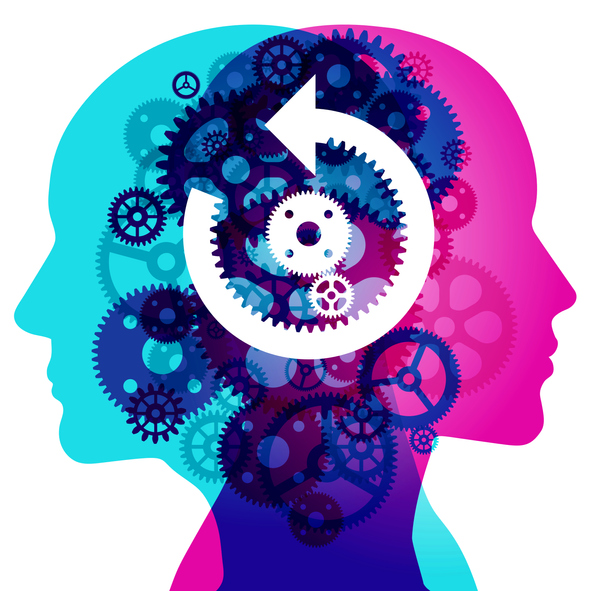Editor’s note: Matthew Hellon is a research executive at global insights agency Northstar Research, London.
You’ve likely heard of behavioral science. After all, we’re all in the behavior business.
 Some think behavioral science is just a list of human irrationalities, often used to explain a point you’re already trying to make. Need to explain why people say they recycle when they don’t? Use social desirability bias. Need to explain why people won’t switch to your brand? Use status quo bias
Some think behavioral science is just a list of human irrationalities, often used to explain a point you’re already trying to make. Need to explain why people say they recycle when they don’t? Use social desirability bias. Need to explain why people won’t switch to your brand? Use status quo bias
Thinking of behavioral science in this way isn’t necessary problematic. But you may be missing out on ways you can improve your understanding of human behavior. The field has more to offer – much more. Marketing is all about human behavior. This means you should be using as much relevant behavioral science as possible. This includes behavioral science frameworks. These are an underutilized and more practical element of the field. Behavioral science frameworks help change behavior because they bridge the gap between theory (scientific study) and practical application (changing real-world behavior).
The role of frameworks
Frameworks structure processes and provide safety with their credibility and their social proof. Behavioral science frameworks structure the process of developing behavior change interventions (actions that try and change behavior). Interventions can be anything from mass media campaigns to changes in the physical environment.
Interventions are more effective when they’re based on theories of human behavior. Rather than just assuming the barriers or facilitators of a given behavior, theories tell us what the real influences are. This is useful. But theories are hard to apply in the real world. They seek to explain human behavior, not help change it. That’s where frameworks come in.
Many behavioral science frameworks exist. Three of the most prominent are:
- MINDSPACE.
- EAST.
- The behavior change wheel.
I’ll explain what these frameworks are and how you can use them over two articles. A third article will look at testing the effectiveness of interventions that come from frameworks using randomized control trials (RCTs). Let’s start by looking at MINDSPACE.
MINDSPACE – A landmark document
MINDSPACE summarizes nine concepts that influence behavior. It was created by several leading academics, including David Halpern, lead of The Behavioral Insights team, in 2010. The Behavioral Insights Team, also known as the “Nudge unit,” was set up by the U.K. government. The team looks at where behavioral science can be used to improve public policy. MINDSPACE was a landmark document for the time as it made behavioral science accessible to those responsible for public policy.
MINDSPACE is an acronym that gives you a checklist of things to consider when trying to change behavior:
- Messenger – We are heavily influenced by who communicates information to us.
- Incentives – Our responses to incentives are shaped by predictable mental shortcuts.
- Norms – We are strongly influenced by what others do.
- Defaults – We “go with the flow” of preset options.
- Salience – Our attention is drawn to what is novel and seems relevant to us.
- Priming – Our acts are often influenced by subconscious cues.
- Affect – Our emotional associations can powerfully shape our actions.
- Commitments – We seek to be consistent with our public promises and reciprocate acts.
- Ego – We act in ways that make us feel better about ourselves.
MINDSPACE was well received. But after two years, The Behavioral Insights team found the nine elements were “hard for busy policy makers to keep in mind.” Enter EAST.
Four letters are easier than nine
If a nine-letter acronym is too much, try EAST. EAST is a continuation of MINDSPACE and further groups behavioral science research into four ways behavior can be changed. Make the target behavior easy, attractive, social and timely.
- Easy refers to removing friction. Make any messages clear and use defaults to remove friction.
- Attractive is all about attention and incentives. A behavior becomes attractive if it grabs our attention and the benefits outweigh the costs.
- Social refers to humans being social creatures. We can’t ignore how others impact our behavior. We’re more likely to carry out a behavior if we know others are doing it.
- Timely refers to the need to tailor interventions to when people will be most receptive. Interventions need to fit in with people’s lives to be most effective.
How can MINDSPACE and EAST help you?
MINDSPACE and EAST can be used in two main ways.
- Evaluating the research process:
- Using commitments to encourage more honesty in focus groups.
- Simplifying questions and answer options to make things easy for respondents.
- Use professional designers to make surveys attractive.
- Meetings are assumed to be more important if executives are attending, reflecting the social nature of work.
- A final debrief will be received differently depending on the time of day it is delivered.
- Providing recommendations to clients:
- Using social norms to encourage consumers to recycle.
- Utilizing defaults to increase retirement plan uptake.
- Using brand ambassadors to be the right messenger.
- Pair behaviors with ego boosting behaviors.
Both MINDSPACE and EAST are summaries of behavioral science research. They satisfy a framework’s aim of making academic research practical. However, they aren’t comprehensive guides to developing interventions. They help generate ideas, but don’t provide step-by-step instructions.
The next article in this mini-series will cover the behavior change wheel – a more structured framework with designated steps for intervention development.
